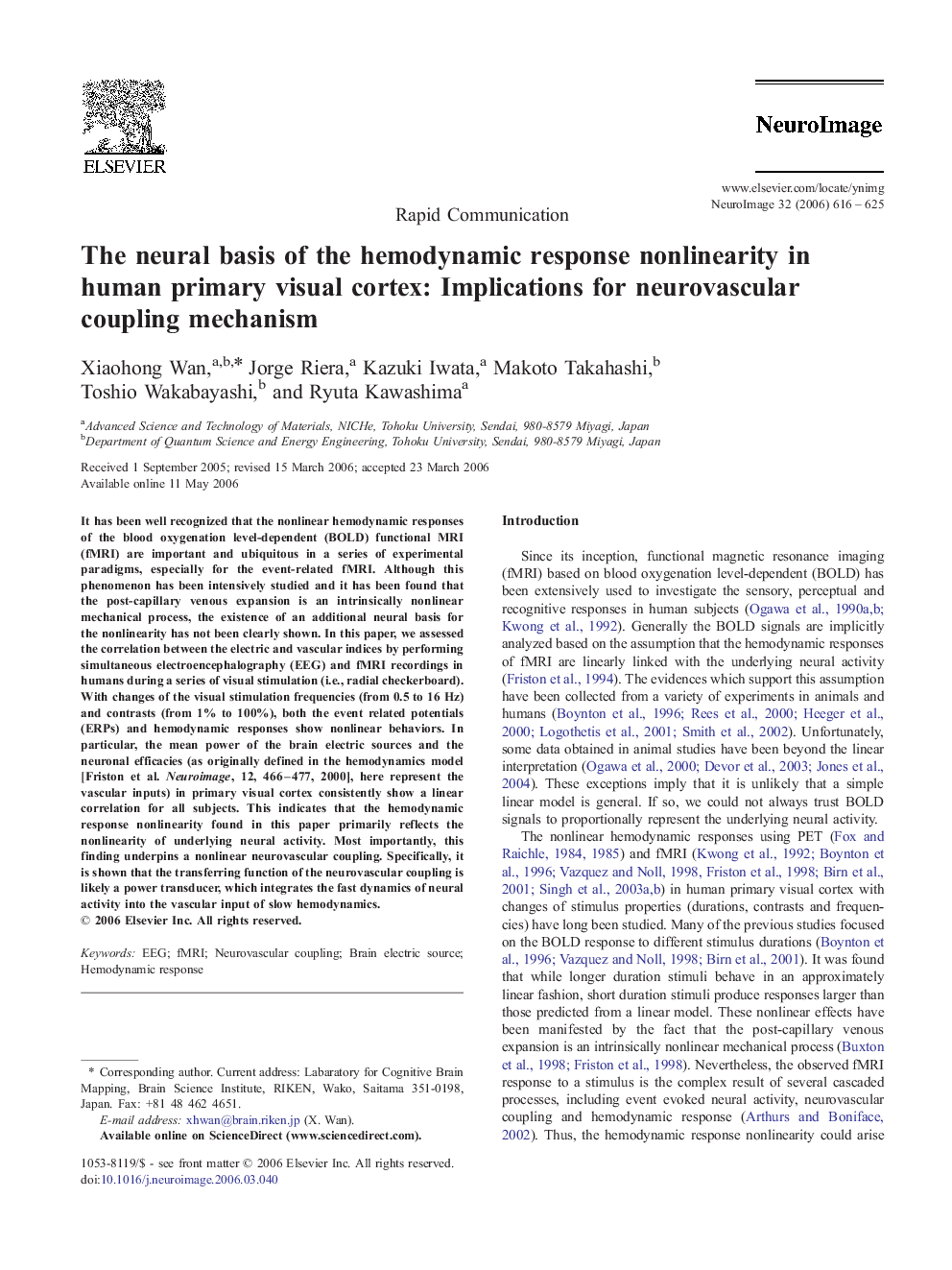| Article ID | Journal | Published Year | Pages | File Type |
|---|---|---|---|---|
| 3074256 | NeuroImage | 2006 | 10 Pages |
It has been well recognized that the nonlinear hemodynamic responses of the blood oxygenation level-dependent (BOLD) functional MRI (fMRI) are important and ubiquitous in a series of experimental paradigms, especially for the event-related fMRI. Although this phenomenon has been intensively studied and it has been found that the post-capillary venous expansion is an intrinsically nonlinear mechanical process, the existence of an additional neural basis for the nonlinearity has not been clearly shown. In this paper, we assessed the correlation between the electric and vascular indices by performing simultaneous electroencephalography (EEG) and fMRI recordings in humans during a series of visual stimulation (i.e., radial checkerboard). With changes of the visual stimulation frequencies (from 0.5 to 16 Hz) and contrasts (from 1% to 100%), both the event related potentials (ERPs) and hemodynamic responses show nonlinear behaviors. In particular, the mean power of the brain electric sources and the neuronal efficacies (as originally defined in the hemodynamics model [Friston et al. Neuroimage, 12, 466–477, 2000], here represent the vascular inputs) in primary visual cortex consistently show a linear correlation for all subjects. This indicates that the hemodynamic response nonlinearity found in this paper primarily reflects the nonlinearity of underlying neural activity. Most importantly, this finding underpins a nonlinear neurovascular coupling. Specifically, it is shown that the transferring function of the neurovascular coupling is likely a power transducer, which integrates the fast dynamics of neural activity into the vascular input of slow hemodynamics.
